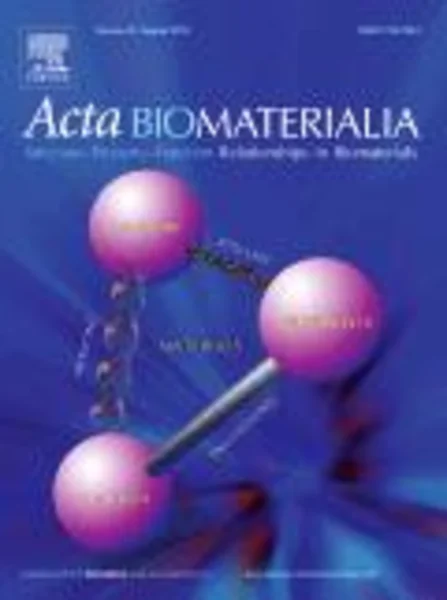-
in vivo effects of l1 coating on inflammation and neuronal health at the electrode–tissue interface in rat spinal cord and dorsal root ganglion
جزئیات بیشتر مقاله- تاریخ ارائه: 1392/01/01
- تاریخ انتشار در تی پی بین: 1392/01/01
- تعداد بازدید: 816
- تعداد پرسش و پاسخ ها: 0
- شماره تماس دبیرخانه رویداد: -
the spinal cord (sc) and dorsal root ganglion (drg) are target implantation regions for neural prosthetics, but the tissue–electrode interface in these regions is not well-studied. to improve understanding of these locations, the tissue reactions around implanted electrodes were characterized. l1, an adhesion molecule shown to maintain neuronal density and reduce gliosis in brain tissue, was then evaluated in sc and drg implants. following l1 immobilization onto neural electrodes, the bioactivities of the coatings were verified in vitro using neuron, astrocyte and microglia cultures. non-modified and l1-coated electrodes were implanted into adult rats for 1 or 4 weeks. hematoxylin and eosin staining along with cell-type specific antibodies were used to characterize the tissue response. in the sc and drg, cells aggregated at the electrode–tissue interface. microglia staining was more intense around the implant site and decreased with distance from the interface. neurofilament staining in both locations decreased or was absent around the implant, compared with surrounding tissue. with l1, neurofilament staining was significantly increased while neuronal cell death decreased. these results indicate that l1-modified electrodes may result in an improved chronic neural interface and will be evaluated in recording and stimulation studies.
مقالات جدیدترین رویدادها
-
استفاده از تحلیل اهمیت-عملکرد در ارائه الگوی مدیریت خلاقیت سازمانی و ارائه راهکار جهت بهبود
-
بررسی تاثیر ارزش وجوه نقد مازاد بر ساختار سرمایه شرکت های پذیرفته شده در بورس اوراق بهادار تهران
-
بررسی تأثیر سطح افشای ریسک بر قرارداد بدهی شرکت های پذیرفته شده در بورس اوراق بهادار تهران
-
بررسی تأثیر رتبه بندی اعتباری مبتنی بر مدل امتیاز بازار نوظهور بر نقد شوندگی سهام با تأکید بر خصوصی سازی شرکت ها
-
تأثیر آمیخته بازاریابی پوشاک ایرانی بر تصویر ذهنی مشتری پوشاک ایرانی (هاکوپیان)
-
مقایسه پراکسیداسیون لیپید پلاسما و فعالت آنزیم آنتی اکسیدان (گلوتاتیون پراکسیداز) گلبول قرمز بیماران دیابتی تیپ 2 و افراد سالم
-
گزارش یک مورد peripartum cardiomyopathy کاردیومیوپاتی برق آسا متعاقب زایمان و بهبودی کامل در پیگیری دو ساله
-
بهینه سازی سطح مقطع و شکل هندسی خرپاهای دوبعدی و سه بعدی با استفاده از روش گروه ذره ها (pso)
-
internal relationship modeling and production planning optimization for the manufactured housing
-
wave-induced fluidization of cohesive sediment beds
مقالات جدیدترین ژورنال ها
-
مدیریت و بررسی افسردگی دانش آموزان دختر مقطع متوسطه دوم در دروان کرونا در شهرستان دزفول
-
مدیریت و بررسی خرد سیاسی در اندیشه ی فردوسی در ادب ایران
-
واکاوی و مدیریت توصیفی قلمدان(جاکلیدی)ضریح در موزه آستان قدس رضوی
-
بررسی تاثیر خلاقیت، دانش و انگیزه کارکنان بر پیشنهادات نوآورانه کارکنان ( مورد مطالعه: هتل های 3 و 4 ستاره استان کرمان)
-
بررسی تاثیر کیفیت سیستم های اطلاعاتی بر تصمیم گیری موفق در شرکتهای تولیدی استان اصفهان (مورد مطالعه: مدیران شرکتهای تولیدی استان اصفهان)
-
ارائه یک طرح سلسله مراتبی در زمینه بازاریابی اجتماعی
-
نیازهای آموزشی مورد نیاز برای توسعه کارآفرینی بخش کشاورزی استان همدان
-
بررسی رابطه اشتیاق و علاقه به زندگی با تعهد سازمانی کارکنان ادارات آموزش و پرورش شهرستان خرم آباد
-
بررسی رابطه بین انگیزش و تعهد سازمانی در کارکنان اداره ورزش و جوانان استان هرمزگان
-
مطالعه پارامتری تأثیر بازشوها بر سختی درون صفحه دال های دوطرفه مجوف (یوبوت)




سوال خود را در مورد این مقاله مطرح نمایید :